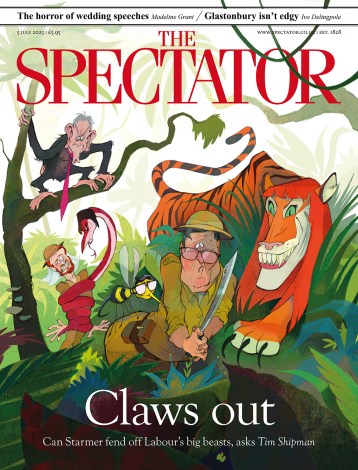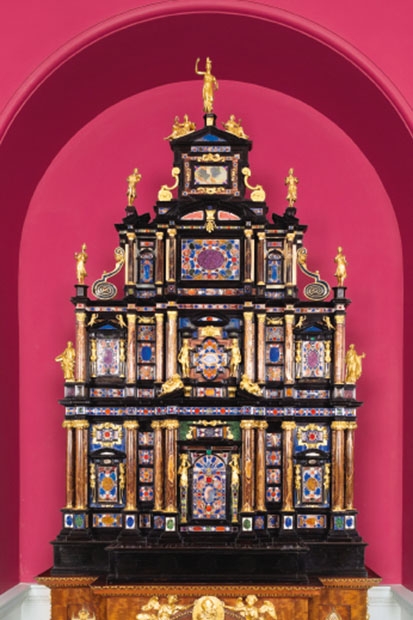Italian cabinets and tables decorated with inlaid semi-precious stones known as ‘pietre dure’ were a ‘must-have’ for English milords returning from their Grand Tours. The finest example is perhaps the Sixtus V cabinet at Stourhead, in Wiltshire, which has just been written up in a thorough, scholarly way by Simon Swynfen Jervis and Dudley Dodd, two eminent furniture and architectural historians. As well as placing the Sixtus V cabinet within the contexts of Roman manufacture and English collecting, the book brings to life its Roman provenance and its subsequent residence at Stourhead after the banker Henry Hoare bought it in about 1740.
According to a (probably correct) tradition, Hoare acquired the cabinet from an unspecified convent in Rome, to which it had been left by the last surviving member of Pope Sixtus V’s family. Inventories state that a cabinet matching its description stood in the ground floor loggia of the Palazzo Felice, the suburban residence (now sadly submerged under the Stazione Termini) from 1576 onwards of Cardinal Felice Peretti, who was to become Pope Sixtus V in 1585. Although not firmly established, the designer was probably Domenico Fontana, the palazzo’s architect, and two likely cabinetmakers based in Rome were Giovanni Vasanzio, a Fleming, and Flaminio Boulanger, a Frenchman.
The cabinet bears no papal insignia but is liberally decorated with pear motifs, Peretti’s personal emblem, and was most likely made after he became cardinal in 1572 and before his political enemy, Pope Gregory XIII, cut off his funds in 1581. At least two of Peretti’s female descendants retired to convents: Margarita Savelli Cesarini (d. 1690) to Santa Maria dei Sette Dolori, and Caterina Giustiniani Savelli (d. 1724), to Santa Caterina a Magnopoli. Either could have supplied the cabinet.
Once the cabinet had been delivered to Stourhead, Hoare had an elaborate mahogany pedestal made for it in 1743, decorated (and quite possibly designed) by the carver John Boson, who worked extensively for William Kent and his patrons. He also had a cabinet room created on the south front, where the piece was exhibited behind a screen of columns. Hoare later added the Armada medal to the display, emphasising the link between Queen Elizabeth I and Pope Sixtus V, who gave his blessing to the ill-starred expedition.
A year before his death in 1785, Henry Hoare bequeathed Stourhead to his grandson, Sir Richard Colt Hoare, who enlarged the house and moved the cabinet to a new room on the north front, where he placed it in a niche with an elaborate papal cornice, created by Thomas Chippendale junior. After Sir Richard’s death in 1838, Stourhead underwent various vicissitudes, including a massive sale in 1883 and a fire in 1902. Fortunately the cabinet survived, and was eventually handed over with the house to the National Trust in 1946.
Ever since the first sale of the Badminton cabinet in 1990 for £8.7 million, pietre dure cabinets have fetched high prices at auction. (In 1936 his brother officers presented John Alfred Codrington with a signed pietre dure table as a wedding present for a mere £6/16s. Oh for the days!) Still, high prices stimulate research. Though there remain frustrating gaps in this story (as well as knowing neither the cabinet maker nor the designer for certain, Hoare’s records are incomplete), the authors have added much to our knowledge of pietre dure furniture from Rome, a centre of manufacture somewhat neglected in comparison with Florence.
Finally, let William Beckford, the great aesthete of the end of the 18th century, have the last word: ‘Sixtus V’s cabinet is divine!’






Comments